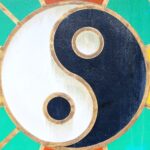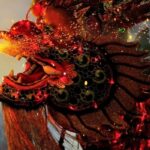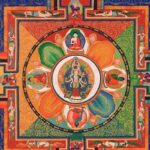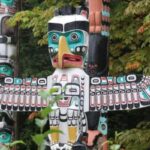We explain what yin-yang is, the origin of this concept and its applications. Also, what is its principle and how is it symbolized.
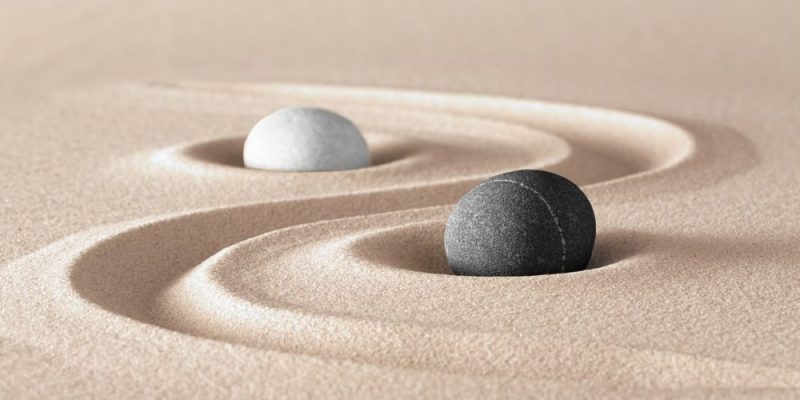
What is yin-yang?
The yin-yang is one of the fundamental principles of Chinese philosophy particularly Taoism or Daoism. Yin means 'dark' and Yang 'bright'; Both terms express the duality that governs the universe.
- The yin. It represents darkness, the earth, the feminine, the north, the left, the cold, the humid, the passivity and the absorption. It is present in even numbers, streams and valleys. Its symbols are the tiger, the color orange and a broken line.
- The yang. It represents the light, the sky, the masculine, the south, the right, the hot, the dry, the activity and the penetration. It is present in odd numbers and mountains. Its symbols are the dragon, the color blue and a continuous line.
Both forces come from Taiji or Tai chi, the “supreme ultimate” or “great ultimate” unity before duality, and according to the philosophy of the Tao they constitute the generating principle of all things.
The yin-yang governs the dynamics of the universe and is present in all things including people. Everything has yin and yang aspects: shadow does not exist without light nor day without night. The two forces interact continuously, so that when one increases, the other decreases, in a dynamic equilibrium.
The notion of yin-yang is at the origin of many Chinese disciplines; is the framework in which traditional medicine is configured and constitutes a fundamental principle of the various Chinese martial arts and exercises, such as baguazhang and tai chi or taijiquan.
Origin of the yin-yang concept
The exact origin of the notions of yin (陰) and yang (陽) is unknown. The traditional Chinese characters for these terms can provide guidance in this regard: the yin character represents the northern, non-sunny part of a mountain, while the yang character represents the southern, sunny part. This suggests a relationship with certain opposing natural phenomena, such as hot and cold seasons. That's why, Both concepts likely originated in ancient Chinese agrarian religions.
In the oracle book I Ching (from around 1200 BC), known as “the book of mutations”, allusions to this dualism are found in many sentences, organized on the basis of antagonistic concepts, such as strength/weakness, rigidity/flexibility, high/ low, which are represented with continuous lines (masculine) and dashed lines (feminine).
The concept of yin-yang was the basis of a Chinese cosmological current – known, precisely, as the yin-yang school – which flourished in the 3rd century BC. C., and whose main representative was Zou Yan. For this current, yin and yang are forces associated with the five elements of nature (water, fire, wood, metal and earth) that, together, govern the universe.
The notion of yin-yang is also present in Confucianism, where it has a moral meaning. According to Confucian doctrine, yin-yang is not only applicable to the natural world: the person must promote harmony and balance both within themselves and in the world in general.
However, It is in Taoism that the idea of yin-yang reaches its greatest development. This school views yin-yang as manifestations of the Tao (or Dao), the flow of the natural world that keeps the universe balanced and orderly.
The idea of yin-yang is also present in many other schools of thought. So much so that, throughout the centuries, permeated all aspects of Chinese culture from astrology and divination to art, medicine and government.
yin-yang principle
The yin-yang can be summarized in some propositions:
- Yin and yang are opposites and complementary. Absolutely everything in the universe has an opposite that complements it, that gives it its reason for being and delimits it. This opposition is relative, since there is a little yin in all yang and vice versa.
- Yin and yang are interdependent. Yin cannot exist without yang nor yang without yin, in the same way that there cannot be day without night.
- Yin and yang are inside everything. Everything can be divided into its yin aspects and its yang aspects; In turn, any of those aspects can also be divided into its own yin and yang aspects, and so on ad infinitum.
- Yin and yang are continually consumed and generated. Both are found at the origin of all things, and form a dynamic balance: if one increases, the other decreases, and vice versa, so that what we perceive as imbalance is something circumstantial and temporary.
- Yin and yang can be exchanged. Yin and yang can become each other, since there is yang in all yin and yin in all yang. There is always a remainder of one in the other.
Yin-yang in Chinese medicine
The yin-yang principle is a central element of Chinese medicine. The first text in which the relationship between yin-yang and health is analyzed is he Inner Canon of the Yellow Emperor written more than two thousand years ago.
traditional chinese medicine part of the notion of chi (or qi), the vital energy present both in the universe and in the human body and mind. Chi, which regulates the balance of the human being, is affected by the opposing forces of yin and yang. The disease is a manifestation of an alteration in chi, which causes a yin-yang imbalance.
Each part of the human body has a yin and a yang. For example, the upper body is assigned to yang while the lower part is assigned to yin. The characterization of yin-yang extends to bodily functions and symptoms of illness. Thus, a deficiency or overabundance of yin or yang is recognized by certain manifestations, for example, the sensation of heat and dark urine, in the case of a lack of yin, or cold in the extremities and clear urine, in the case of lack of yang.
The goal of medicine is to replenish the harmony of qi for which it is necessary to identify the parts of the body affected by an excess or deficiency of yin or yang and restore balance between them.
Applications of the yin-yang concept
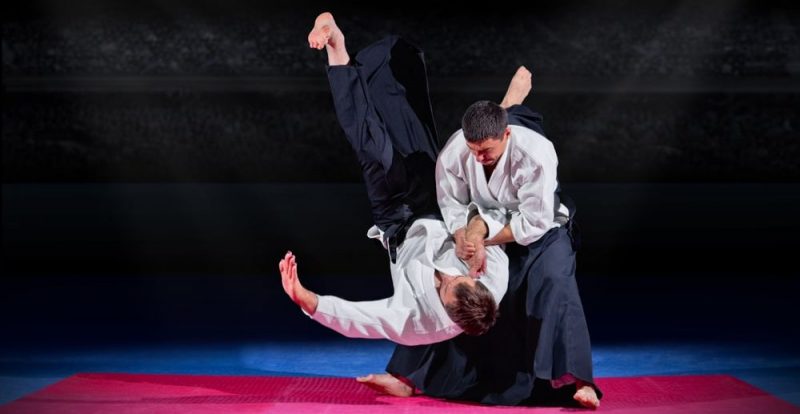
The concept of yin-yang is applied to numerous areas of human knowledge, as a perspective to understand things based on the dualities that are their own and that constitute them. Thus, it is common to find this concept in:
- martial arts which understand the clash of bodies during combat as a dance of opposites whose energies are also complementary.
- feng shui a traditional Chinese practice that seeks the harmonious occupation of space, so that it has a positive influence on people. The balance of yin-yang in the environment causes the vital energy of chi to flow in a way that is beneficial for health and well-being. On the contrary, yin-yang imbalance results in an oppressive environment and a lack of inspiration.
- human relationships as long as a complementarity and reciprocity between opposites or between different personalities is sought, which allows achieving loving balance.
Yin-yang symbol
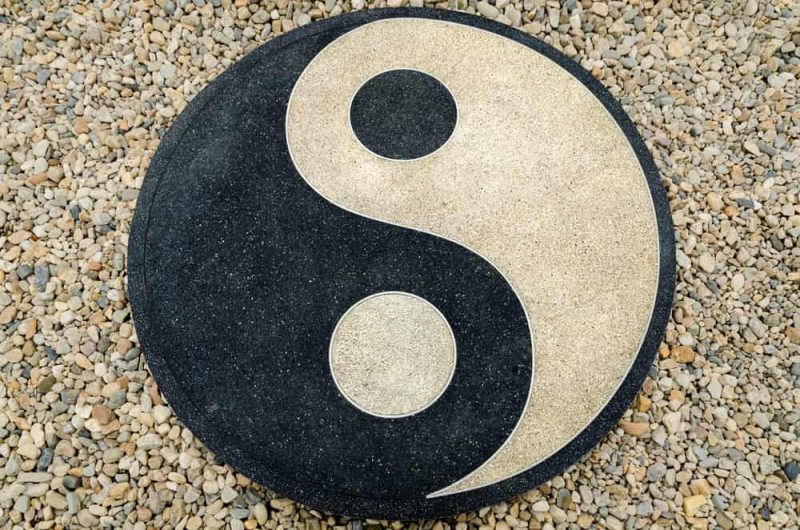
Yin-yang is usually represented by the taijitu (太極圖), a circular diagram in which two shapes stand out (“fish”, in Chinese: 鱼), one dark and one light.
There are many versions of this symbol, but The most famous is the xiantian taijitu (先天太極圖) or “early taijitu”. The diagram consists of a circle with an S-shaped division in the center, which separates two halves: the black half corresponds to yin and the white half to yang. The sinuous dividing line indicates how yin and yang are connected and constantly interact with each other.
Within the yin part of the diagram there is a small white circle, while in the yang part there is a dark circle. This way, it means that nothing is absolute and that every yin has some yang and every yang has some yin.
The outer circle of the taijitu symbolizes the entire universe. It indicates that yin-yang is in ourselves and everything around us.
Continue with: Be
References
- “Yin and yang”, on Wikipedia.
- “Yin and yang”, on Wikipedia.
- “Principle of Yin and Yang” (video), in Hun Yuan Formation.
- “The Ying and the Yang”, in Ancient History Encyclopedia.
- “Metaphysics in Chinese Philosophy,” in Stanford Encyclopedia of Philosophy.
- “Yinyang (Eastern philosophy)”, in Britannica.
- “Yin and Yang, explained: how to apply this ancient principle to modern life”, in the Higher School of Traditional Chinese Medicine.

